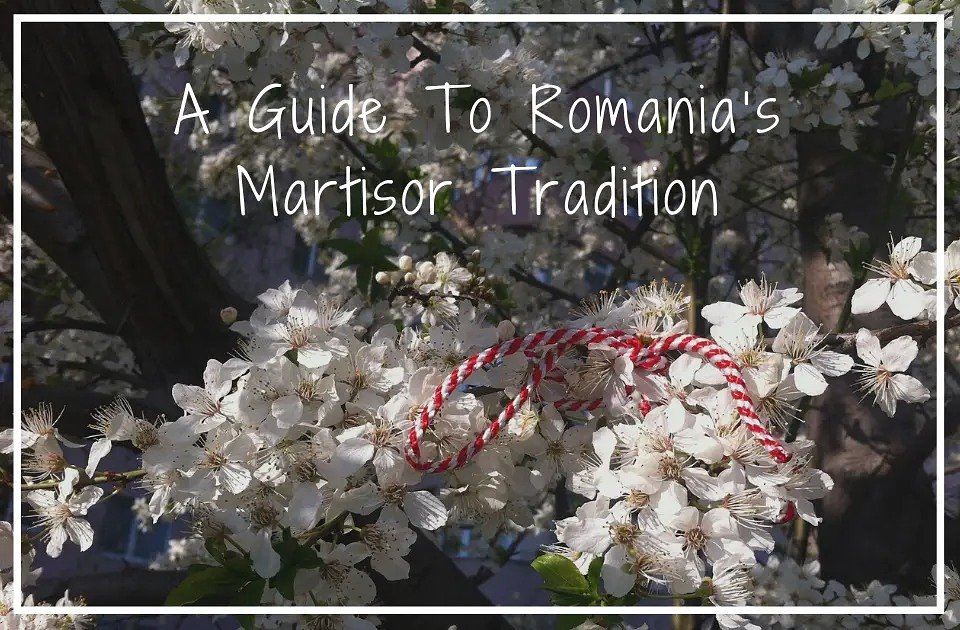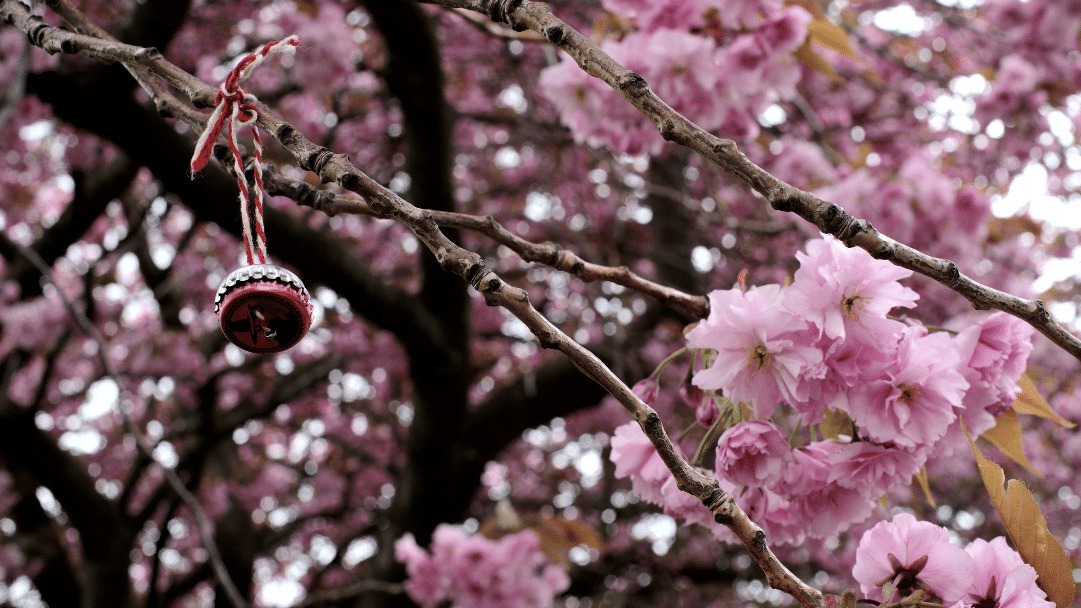A Guide To Romania’s Martisor Tradition

Posted on Sun 11 Jul 2021
Spring is a perfect time to visit Romania, with much of the nature emerging from the cold winter and beginning to bloom. To mark the coming of spring, the Mărțișor holiday takes place on the 1st March, a tradition that has spanned centuries.
An Introduction to Martisor
The tradition is not strictly Romanian in origin, with roots dating back to ancient Rome and having been influenced by numerous other traditions throughout the ages.
In the last couple of centuries, the tradition in Romania has mainly revolved around the trinket of the same name, often comprised of a piece of string coloured red and white and sometimes tied around a pebble, coin or piece of jewellery.
These items are typically gifted to one another during the holiday, with women expecting to receive this (and potentially other gifts too) from their closest male friends and family as a sign of friendship, respect and admiration.
Upon receiving the gift, both men and women pin the item to their clothes, typically around the breast pocket, making it close to the heart, until the end of March. When March draws to a close, the trinket is hung on a fruit tree and is said to bring wealth to the original owner.

Image Source: Swithun Crowe
A History of the Martisor Tradition
As with many traditions, the roots of Martisor are particularly hard to pinpoint as there is very little concrete evidence available. One of the main links with the ancient Romans is that the New Year would be celebrated on 1st March, thus linking the dates of these two traditions.
There is also the legend of Baba Dochia, one of the most well-known figures in Romanian mythology. Most commonly associated with the coming of spring, Baba Dochia (or The Old Dokia) is often thought of as an old woman with a herd of sheep or goats. She represents mankind’s impatience when awaiting the coming of a new spring season.
This links to the Martisor tradition with the tale of Dragomir
Dragomir is her son who marries a girl that Baba Dochia does not approve of and to get her revenge, sends her new daughter in law to wash black wool in a stream. She tells her not to return until the black wool has turned white. No matter how hard she washes, the wool does not change colour and she begins to cry from despair, worrying that she will not see her husband again.
Upon seeing her from the sky, Jesus comes down and presents the girl with a red flower, saying to wash the wool with that. Miraculously, this works, and the girl returns home happily to her husband and Baba Dochia. Baba Dochia is angry that spring has come, since flowers only bloom in spring, and leaves to go to the mountains wearing nine coats. As the days grow warmer, she leaves the coats behind, until the last day when the weather changes and she is frozen on the mountain without a coat.

Celebrating Martisor in Romania
If you’re planning on heading to Romania during the 1st March, make sure you pick up a martisor for your loved one! In the cities, such as Bucharest and Brasov, there are often Martisor fairs which sell small trinkets, accessories and other homemade products. It is also a good time to head out into the bars and restaurants as undoubtedly people will be out celebrating the coming of spring and warm weather.
If you’re staying in more rural areas, the tradition is often a little stronger, as the smaller communities enjoy partaking in these events. You’ll likely see both men and women wearing the martisors along with many being sold in the shops of towns and villages.
Why not make your spring trip to Romania this year? With a chance to explore Bucharest, Brasov and more rural areas in the country, our Romanian experiences are perfect for seeing the authentic side to the country!
From summer holidays in Transylvania to visiting the ice hotel, Romania, we’ve got something for everyone!
Read more from our blog here


